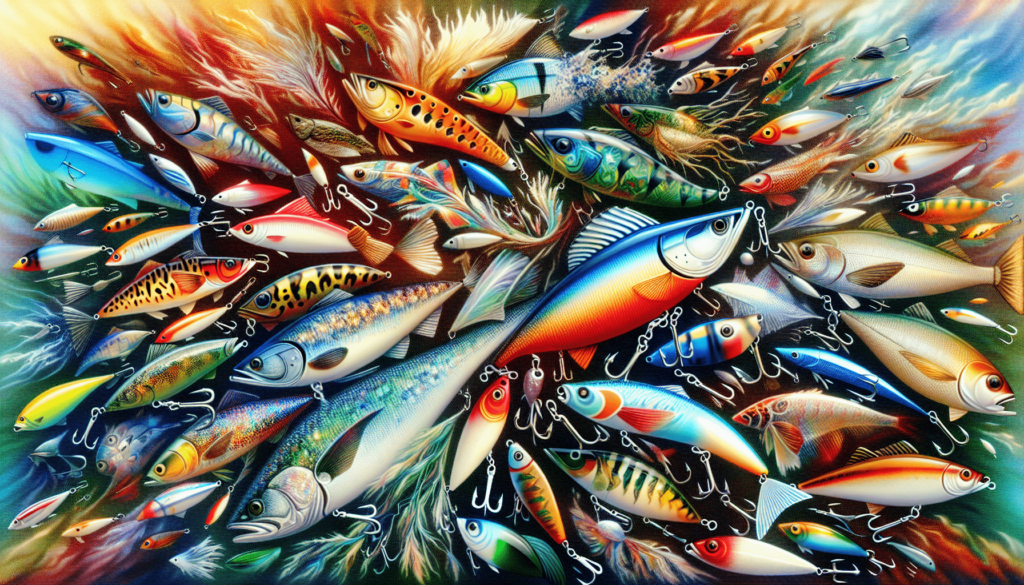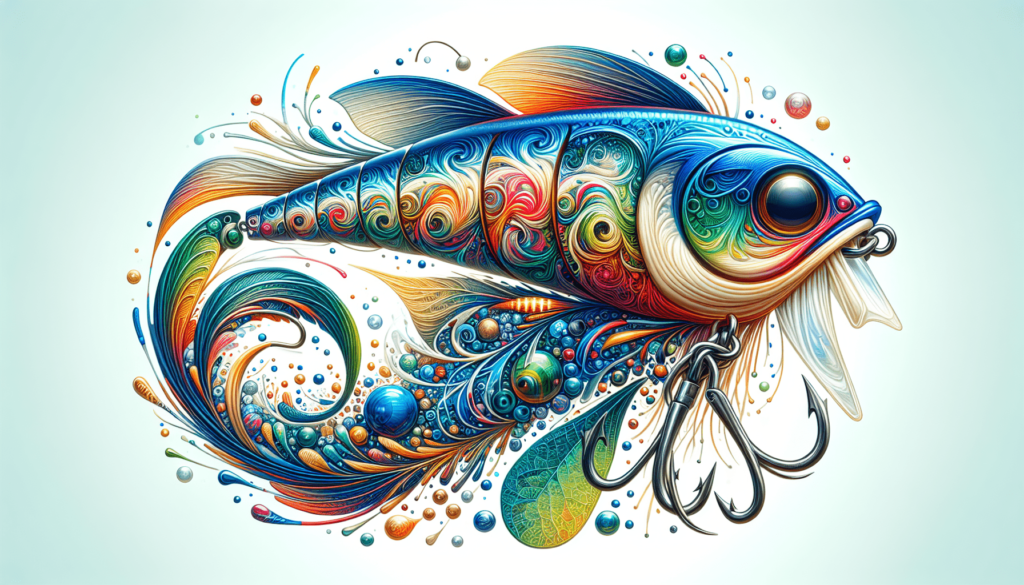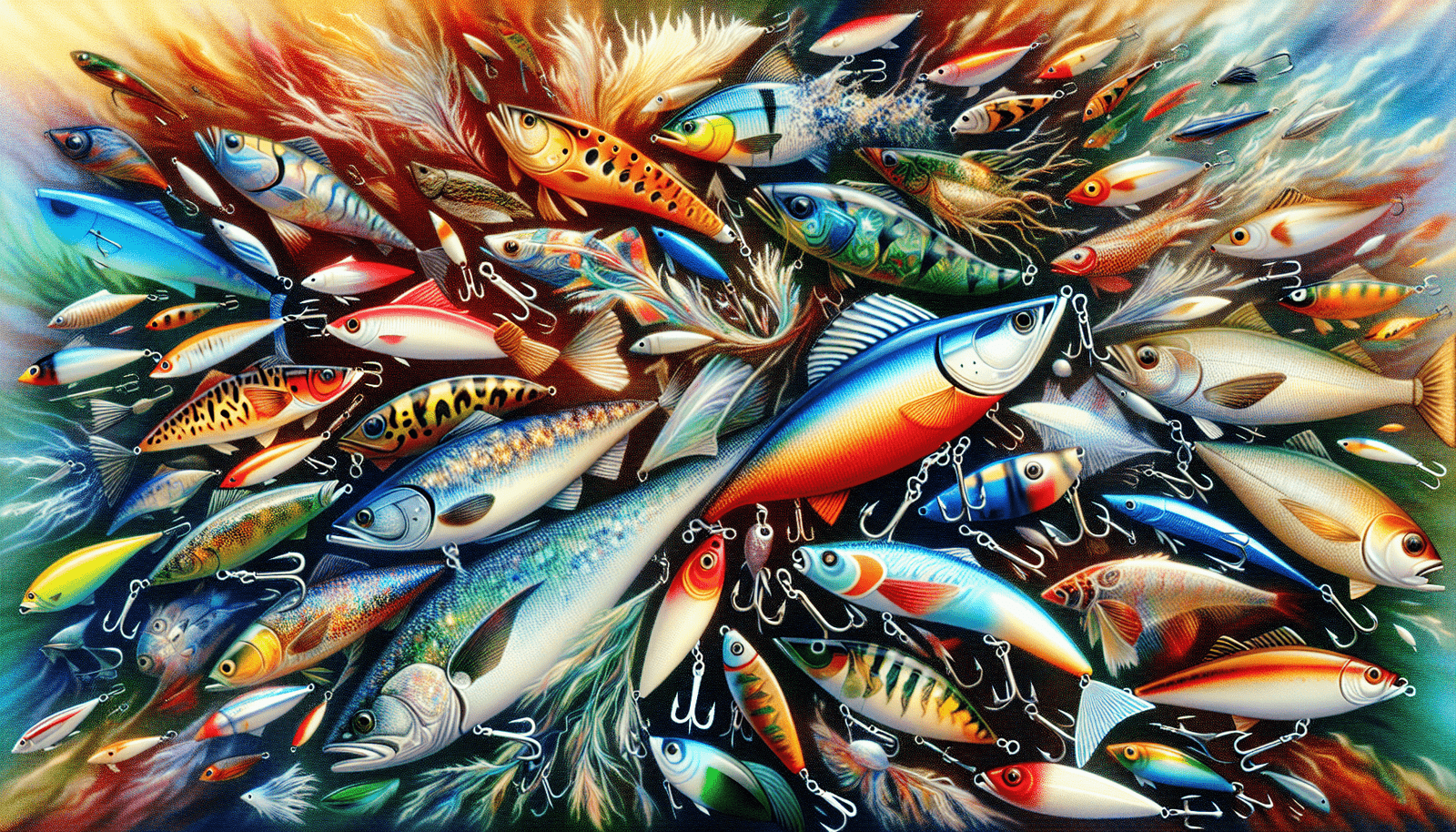In the world of fishing, the ability to catch fish consistently often comes down to the right lure for the specific fish and conditions you’re facing. Whether you’re targeting bass in a clear lake or trout in a fast-flowing river, customizing your lures can make all the difference. By tweaking the color, size, and action of your lures, you can entice even the most finicky fish into biting. In this article, we will explore the art of customizing lures and share some valuable tips on how to make the most out of your fishing experience. So grab your gear and get ready to reel in some big catches!

Understanding the Target Fish
When it comes to fishing, understanding the behavior and preferences of the fish you are targeting is crucial. By researching their behavior and preferences, you can increase your chances of success. Take the time to learn about the specific habitat and feeding patterns of the fish you are after. Are they bottom dwellers or surface feeders? Do they prefer rocky areas or open water? Understanding these factors will help you choose the right lure and presentation techniques.
Choosing the Right Lure Type
The world of fishing lures can be overwhelming, with countless options to choose from. Understanding the different types of lures available will help you make an informed decision. Some common lure types include crankbaits, jigs, spinners, and soft plastics. Each lure type is designed to imitate a specific prey species or trigger a particular feeding response. By matching the lure type to the target fish’s feeding behavior, you increase your chances of enticing a strike.
When choosing the right lure type, it’s also essential to consider the water conditions and visibility. In murky water, for example, a brightly colored lure with a strong vibration may be more effective in attracting the attention of fish. On the other hand, in clear water, you may want to opt for a more natural-looking lure that closely mimics the prey species. By adapting to these factors, you can increase your lure’s effectiveness.
CHECK PRICING
Selecting the Proper Size and Color
Just like with the lure type, selecting the proper size and color is crucial when customizing your lure. Determining the appropriate lure size is often based on the target fish’s prey size. If the fish you are targeting primarily feeds on small baitfish, using a smaller-sized lure will increase your chances of success. On the other hand, if the target fish feasts on larger prey, using a larger-sized lure may be more effective.
The water clarity and visibility also play a significant role in color selection. In clear water, fish have better visibility, and as a result, may be more particular about the color of the lure. Matching the color to the prey species found in the area can be a good strategy. In murkier water, however, visibility is reduced, and high-contrast color patterns may be more effective in grabbing the fish’s attention. Experimenting with different color combinations and patterns will enable you to find what works best in different water conditions.

Modifying Lure Action
Sometimes, simply selecting the right lure type, size, and color is not enough to entice a strike. That’s when modifying the lure’s action comes into play. Adjusting the weight distribution of the lure can change its swimming action. Moving the weight forward, for example, can create a more erratic and aggressive movement, while moving it toward the tail can create a more subtle and natural action.
Another modification option is adding or removing diving lips. These lips can control the depth at which the lure dives, allowing you to target fish at different levels of the water column. By adjusting the diving lip, you can tailor the lure’s presentation to the target fish’s preferred depth.
Additionally, you can enhance the lure’s action by adding additional components. Split rings, rattles, and trailers are just a few examples of components that can be added to a lure to increase its appeal. Experimenting with these modifications can make your lure more enticing to fish and increase your chances of getting a strike.
Adding Scent and Attractants
While visual and auditory cues are essential in lure customization, don’t underestimate the power of smell. Many fish rely on their sense of smell to locate prey, making scent an important factor in attracting fish. Understanding the role of scent in attracting fish and choosing scent products that match the target fish’s preferences will enhance your lure’s effectiveness.
Applying attractants or scents to the lure effectively is also critical. Make sure to follow the manufacturer’s instructions and apply the scent using proper techniques. Some attractants may require reapplication throughout the fishing trip, so be prepared to refresh the scent as needed.
Creating Custom Paint Jobs
Customizing the appearance of your lure can be a fun and creative way to increase its appeal to fish. Using paint to mimic natural prey species is a popular technique among anglers. By replicating the colors and patterns of the fish’s preferred prey, you can create a more lifelike and enticing lure.
Experimentation with different color combinations and patterns can also yield exciting results. Some anglers have found success with unusual color combinations that stand out from the typical offerings in the water. Don’t be afraid to think outside the box and try something new. You might just stumble upon a color pattern that works exceptionally well in certain conditions.
To protect your custom paint job and extend the lure’s lifespan, it’s essential to apply clear protective coatings. These coatings will help preserve the paint and prevent it from chipping or fading over time. Make sure to use a high-quality coating and follow the application instructions carefully for the best results.
Adding Rattles or Sound Elements
Sound can be a powerful tool in attracting fish. Many species are sensitive to vibrations and sound in the water, making rattles or sound-producing devices effective additions to your lure. Understanding the impact of sound on fish behavior will help you select the appropriate sound elements.
When adding rattles or sound elements to your lure, it’s crucial to properly install and position them. Ensure they are securely attached and won’t impede the lure’s action. Positioning them strategically can create different sounds and vibrations in the water, increasing the lure’s effectiveness. Experimenting with different arrangements will allow you to find the optimal setup for triggering strikes.
Adjusting Lure Presentation Techniques
Using the right lure is only part of the equation. The way you present the lure can make all the difference in enticing a fish to strike. Varying the retrieval speed and depth can help match the desired behavior of the fish. Some fish may prefer a slow and steady retrieve, while others may be triggered by a fast and erratic movement. Pay attention to the fish’s response and adjust your presentation accordingly.
Implementing realistic movements is another technique to trigger strikes. For example, if you are using a crankbait lure, try imitating the motion of a wounded baitfish by pausing and twitching the lure during the retrieve. This subtle variation can often make a big difference in enticing a strike.
Experimenting with different casting angles and locations is also important. Some fish may prefer lures presented directly in front of them, while others may be more enticed by a lure approaching from a different direction. By varying the casting angle and location, you can target different areas and increase your chances of finding active fish.
Considering Environmental Factors
Environmental factors play a significant role in fish behavior and, consequently, lure customization. Adapting your lure customization to different seasons and weather conditions is important for success. Different seasons may bring changes in water temperature, fish behavior, and prey availability. By adjusting your lure’s size, color, and action to match these variations, you can increase your chances of attracting fish.
Water temperature and oxygen levels are also crucial factors to consider. Fish are ectothermic creatures, meaning their body temperature matches their environment. As water temperature changes, so does their metabolism and activity level. Modifying your lure presentation based on the water temperature can keep you in tune with the fish’s preferred behaviors.
Additionally, the time of day can impact fish activity. Some species may be more active during dawn and dusk, while others may prefer feeding during midday. By adjusting your lure presentation techniques to match the time of day, you can maximize your chances of a strike.
Record Keeping and Evaluation
Maintaining a fishing log is a valuable tool for any angler. By tracking your lure customization success and analyzing the effectiveness of different modifications, you can make more informed adjustments in the future. Note down the lure type, size, color, and any modifications you made, as well as the conditions and results. Over time, you’ll start to notice patterns and trends, allowing you to fine-tune your customization techniques.
In conclusion, customizing lures for specific fish and conditions can greatly improve your fishing success. Understanding the behavior and preferences of your target fish, choosing the right lure type, size, and color, modifying the lure’s action, adding scent and attractants, creating custom paint jobs, adding rattles or sound elements, adjusting lure presentation techniques, considering environmental factors, and keeping track of your experiences are all essential steps in the process. By taking the time to customize your lures, you increase your chances of enticing strikes and reeling in that prized catch. Happy fishing!


